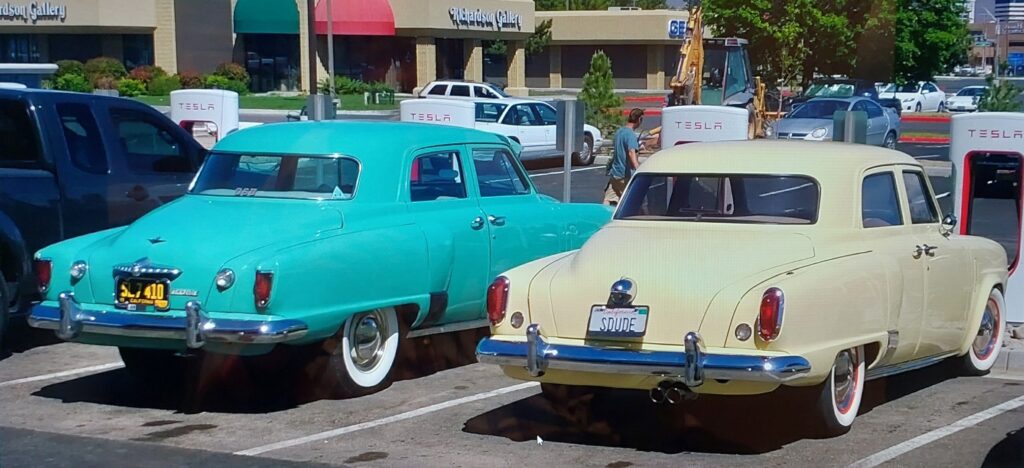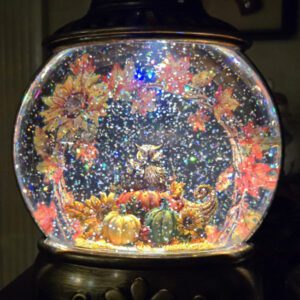By: Jon Stalnaker
AKA The Studebaker Dude
Last week I told the story about registering my modified Studebaker at a Concours d’Elegance show in California. As a reminder, Concours shows are supposed to be original (or restored to original) automobiles. Now, not all of the cars were without modifications, and it wasn’t heavily policed, but they did require a photograph of the car with the registration application. I wasn’t trying to fool anyone, well maybe a little bit, I really wanted to display my car in this hoity-toity venue.
While my car looks like an original Bullet Nose Studebaker to most people, it wouldn’t fool a single Studebaker aficionado. When I was having my car rebuilt, I supplied a list of modification suggestions to Roger, who was doing all the work. I changed my mind several times over the period of time it was under construction, and Roger had a few great ideas of his own. The stance is the biggest giveaway as it tracts lower and wider than a car built in 1951. That obvious modification is downplayed by the fact that the wide whitewall tires and original wheel covers give it a stock look. I didn’t like the original gas filler door as it was spring operated, and they don’t keep closed well when the springs get old. Besides, there wasn’t a lock on it, and I didn’t want to mess with a locking gas cap. Roger cut out a late model Honda filler door with a remote button that opened it from the inside of the car. An item that many cars have had for decades. It was something most people wouldn’t think twice about. But they didn’t exist in 1951.
The other big modification that non-Studebaker folks wouldn’t notice are the backup lights. They were an option in 1951 and, in my opinion, were a little clumsy looking. I kinda wanted backup lights but told Roger that I didn’t like the way the optional Studebaker ones looked. Roger found a set of backup lights at the wrecking yard that were in a 1967 GTO bumper. They fit perfectly in the rear panel just below and to the outside of where Studebaker placed the big clumsy ones they used. Instead of being domed, they were flush with the body. Roger got a big thumbs up from me on that modification, but a Studebaker purist probably wouldn’t like it. I didn’t care, it’s my car, and I like it better. Everything else on the outside is how Studebaker built it. Even the side fender air vents were left on the car despite the fact that they were not used and bolted shut.
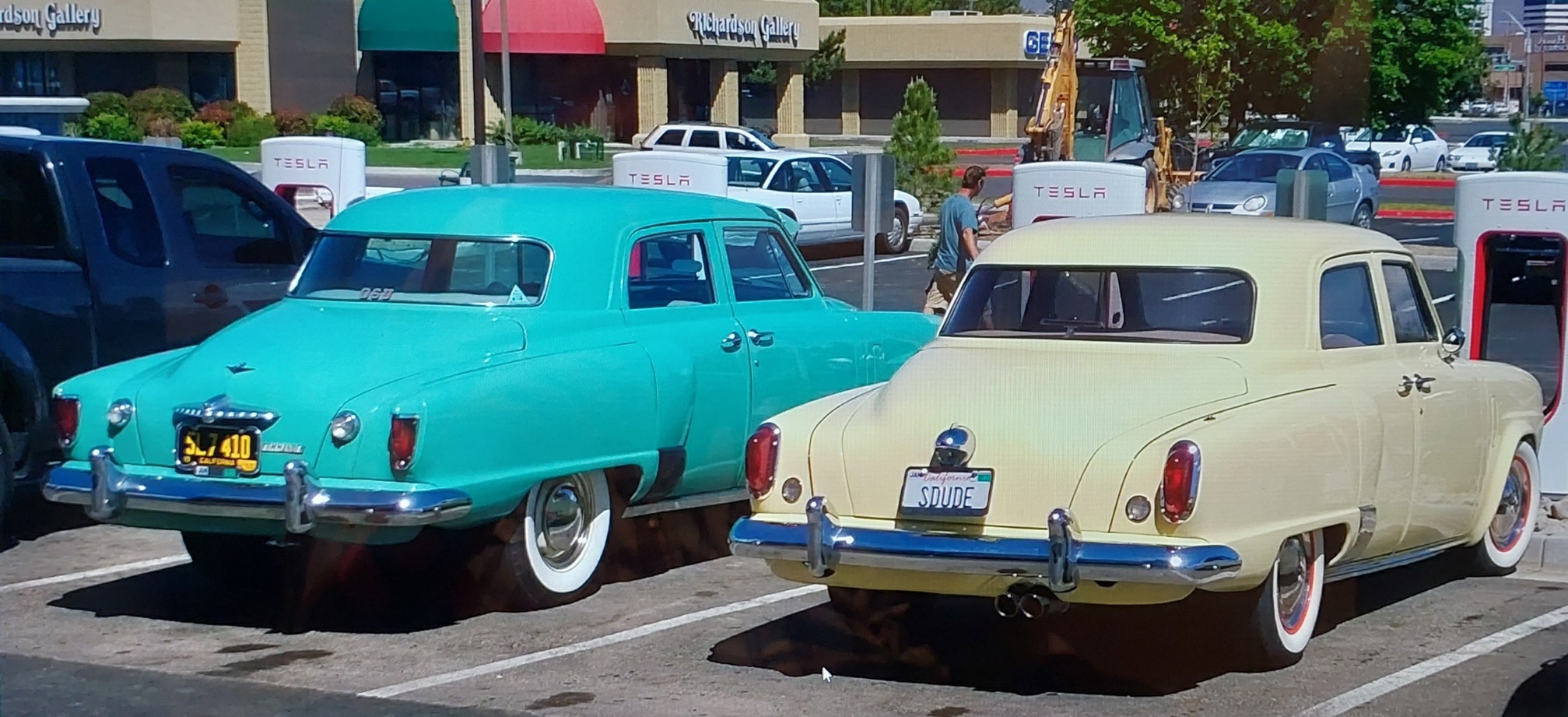
The interior of the car is a different story. The original bench seats are upholstered in period-correct material, but the dash and door panels were highly modified. My steering wheel is not original but is period correct with a Studebaker crest in the center. For this reason, I chose not to have the car judged. I parked it with the doors closed and the door panels were not that noticeable to anyone peeking in the window. The biggest “telltale” was the modern stereo in the dash. I saw a few cars with modern stereos in the previous year’s display, but I didn’t want something that obvious for my car. I got creative, as I often do, and built a faux faceplate that looks like an original AM radio of the period. It even has the Studebaker name on it. I went to an automotive stereo place and asked the guy if he had a removable faceplate in his trash can. My stereo has a removable faceplate, so I made my faux AM radio faceplate out of the broken one. It didn’t have to work, it just had to look real in the dash when attendees peeked through the side window. It actually works well as an anti-theft device. Who wants to steal an old AM radio?
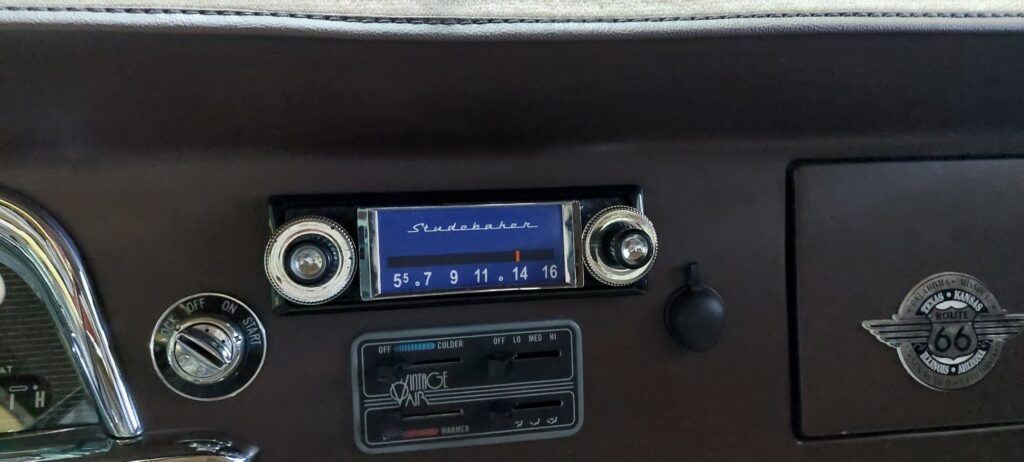
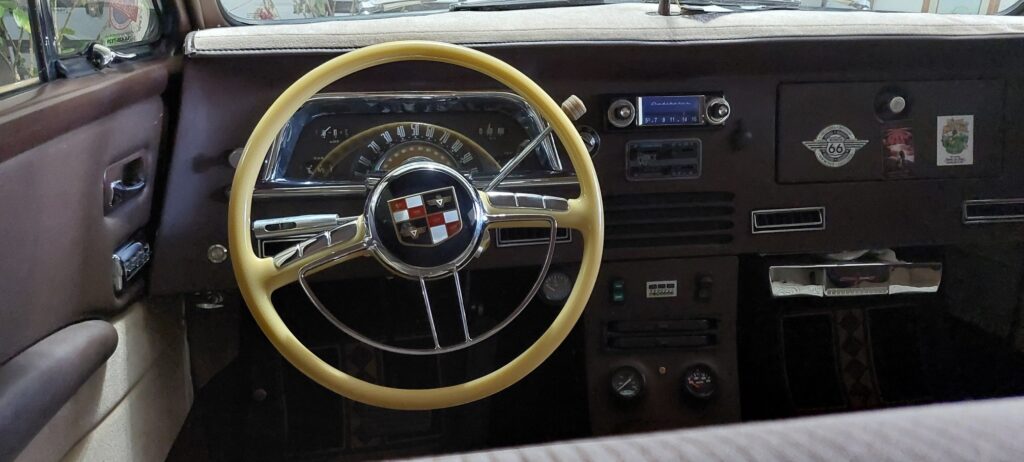
Of course, the entire under mechanicals are modern, but they aren’t seen with the hood down either. So, bottom line, my Studebaker Bullet Nose looked fine in the mix of all the other vintage original automobiles. It wasn’t acknowledged but I have won so many awards with this car that another award was not the reason it was displayed. It was on the show field with some of the best of the best cars. That was all I wanted in the first place. I was proud.

